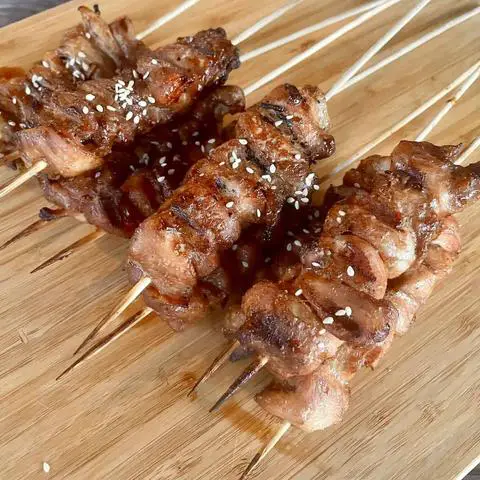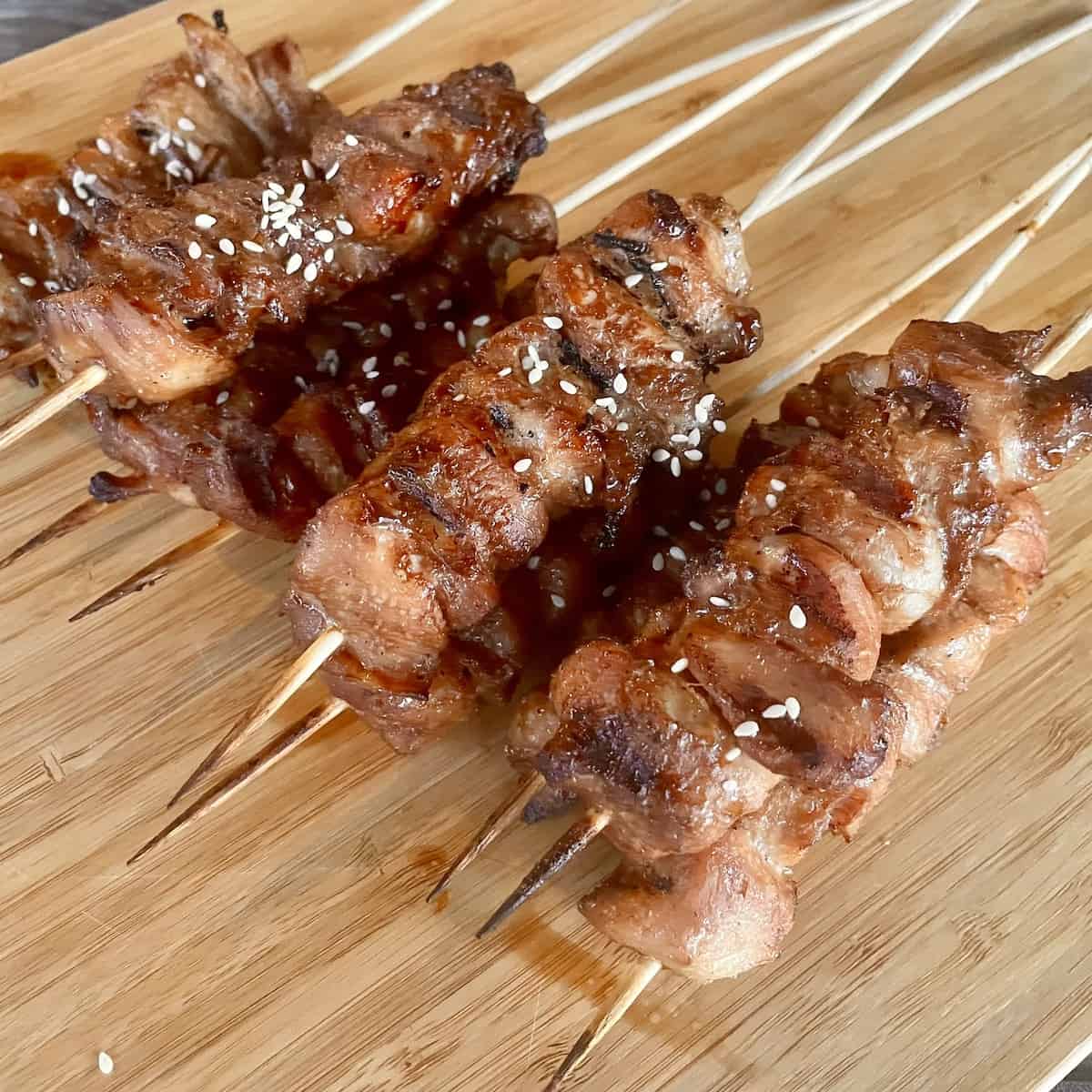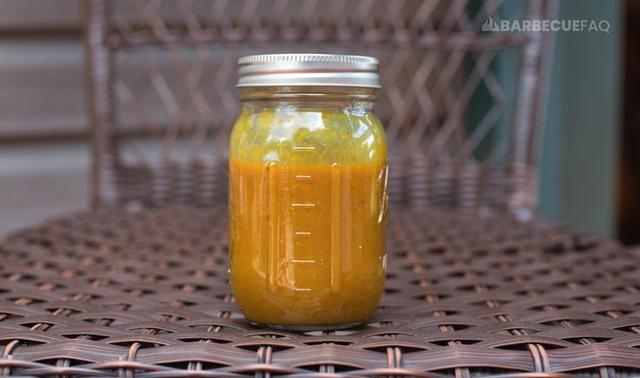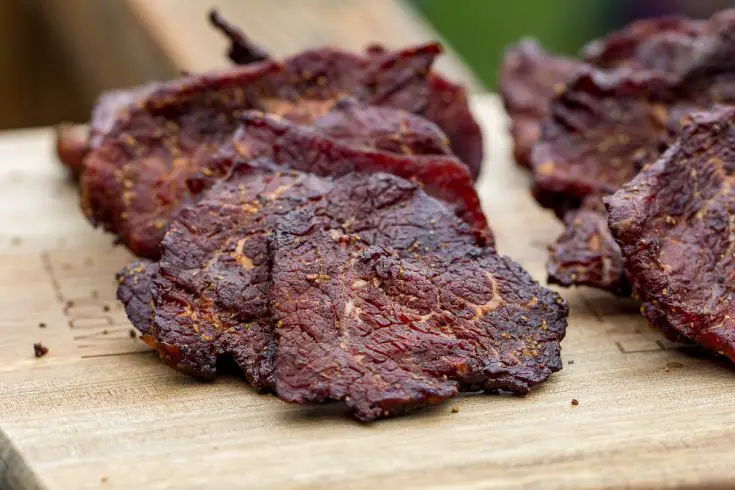
Introducing Chinese Chicken Sticks: A tantalizing fusion of flavors! These crispy, succulent chicken sticks are inspired by authentic Chinese cuisine. Each bite is packed with a harmonious blend of bold spices and tender chicken, creating an irresistible taste sensation. Perfect as a snack or appetizer, these Chinese Chicken Sticks will transport your taste buds to the vibrant streets of China. Get ready to savor the exotic flavors in every bite!
Chinese Chicken on a Stick: Recipe and How-to Guide

Chinese Chicken on a Stick is a popular dish in my household, but due to rising prices at our favorite local spot, I decided to recreate it at home. Boneless chicken thighs are the best choice for this recipe as they have added fat content and are more affordable compared to chicken breast. They also have a richer taste. Six pounds of chicken thighs cost me $12, whereas the same amount of chicken breast would have cost around $18-20.
To prepare the chicken thighs, you need to cut them into strips of relatively uniform size. The fat on the thighs doesn’t need to be completely removed as it adds flavor to the dish. Once the chicken is prepared, you can marinate it for at least 24 hours or up to 2 days for maximum flavor. The marinade primarily relies on ginger and gochujang for its taste.
When it comes to grilling the chicken skewers, make sure to soak wooden skewers overnight if you’re using a charcoal grill. For pellet grills, soaking is not necessary as you can control the hot zones better. Grill the skewers away from direct heat for about 30 minutes, rotating them halfway through. Check for color and charred appearance before removing from the grill.
What Part of the Chicken to Use?
The best part of the chicken to use for Chinese Chicken on a Stick is boneless chicken thighs. They work best because they have added fat content, which makes them more flavorful and moist. Additionally, chicken thighs are more affordable compared to chicken breast. You can purchase six pounds of chicken thighs for $12, while the same amount of chicken breast would cost around $18-20.
White meat and dark meat chicken have distinct characteristics due to their different muscle fibers. Dark meat, such as chicken thighs, contains more myoglobin and is comprised of slow-twitch muscles. These muscles are used by the bird for extended periods of time and require a consistent energy source like oxygen. Myoglobin stores oxygen in cells and provides muscles with the required oxygen for activity. This gives dark meat its reddish hue.
On the other hand, white meat, like chicken breast, is comprised of fast-twitch muscles that do not require much myoglobin. Instead, they make use of glycogen stored in muscles. White meat has a “glass” like quality when raw but turns white upon cooking as the proteins coagulate.
Poultry is graded by the USDA and assigned grades of “A, B, or C.” Grade A poultry products are virtually free from defects such as bruises, discolorations, and feathers. For bone-in products with skin on, there should be no tears in the skin or exposed flesh that could dry out during cooking. Whole birds and parts should be fully fleshed and meaty.
Note: Grades B and C are reserved for processed poultry products where the poultry is cut up or ground.
To prepare the boneless chicken thighs for skewers, open the package by cutting the plastic. Do not wash the chicken, as washing can increase the risk of food poisoning. Cut the chicken thighs into strips of relatively uniform size to ensure they cook evenly on the grill.
While it is possible to remove the fat from the thighs, it is not necessary as fat adds flavor to the dish. Only remove any random nodules that are easily removable.

The marinade for Chinese Chicken on a Stick consists of various ingredients, but two primary taste contributors are ginger and gochujang. It is recommended not to skimp on these ingredients. The marinade is for 3 lbs of chicken thighs and should be mixed thoroughly in a large bowl.
Marinate the chicken in a gallon storage bag, ensuring to remove as much air/oxygen as possible before sealing it. The chicken should be marinated for at least 24 hours but no longer than 2 days according to USDA guidelines.
If you have a charcoal grill where wooden skewers come in direct contact with the heat source, it is recommended to soak the skewers overnight while the chicken marinates. However, if you have a pellet grill, soaking the skewers is unnecessary as you can manipulate hot zones easier.
After marinating for 24-48 hours, drain most of the excess marinade before placing the chicken strips on skewers. Slide each strip onto a skewer rather than weaving them in a “cross-hatch” pattern to prevent them from falling off during cooking.
Grill the chicken skewers at a temperature of 400 degrees Fahrenheit for 15 minutes, then rotate and grill for another 15 minutes. Check for color development through the maillard reaction, and if desired, char the chicken in the hot zones for 1-2 minutes on each side.
Ensure that the internal temperature of the chicken reaches at least 165°F to ensure it is fully cooked.
Chinese Chicken on a Stick can be served with various sauces such as duck sauce or sweet and sour sauce. A recommended sauce that pairs well with this dish is Frank’s Sweet Chili sauce.
White Meat vs Dark Meat
White meat and dark meat refer to different parts of the chicken and have distinct characteristics. White meat, such as chicken breast and wings, is comprised of fast-twitch muscles that are used less frequently by the bird. These muscles rely on glycogen stored in the muscles for energy. When raw, white meat has a glass-like appearance, but it turns white upon cooking due to protein coagulation.
In contrast, dark meat comes from slow-twitch muscles found in chicken thighs and drumsticks. These muscles are used for extended periods of time, requiring a consistent energy source like oxygen. The protein myoglobin stores oxygen in cells and provides dark meat with the oxygen needed for activity. This myoglobin gives dark meat its reddish hue. Dark meat is generally considered juicier and more flavorful than white meat.
USDA Grading?
Poultry is graded by the USDA and is assigned a grade of “A, B, or C.” At your grocery store you’re likely to only see USDA “A” Grade. This grade indicates that the poultry products are virtually free from defects such as bruises, discolorations, and feathers. Bone-in products have no broken bones. For whole birds and parts with the skin on, there are no tears in the skin or exposed flesh that could dry out during cooking, and a good covering of fat under the skin. Also, whole birds and parts will be fully fleshed and meaty. Grades B and C are reserved for processed foods where-in the poultry is cut up, chopped, or ground.
Bone-in or Boneless/Skinless?
When it comes to making Chinese Chicken on a Stick, boneless chicken thighs are the preferred choice. Not only do they have a higher fat content, which adds flavor and moisture to the meat, but they are also more affordable compared to chicken breast. Six pounds of boneless chicken thighs cost around $12, while the same amount of chicken breast would cost $18-20.
Chicken thighs are sourced from the top section of a chicken leg above the knee joint that separates the thigh from the drumstick. They are an entirely dark-meat portion of the chicken, which means they contain more myoglobin. Myoglobin is a protein that stores oxygen in cells and provides muscles with the oxygen required for activity. This gives dark meat its reddish hue and contributes to its rich flavor.

How to Prepare the Chicken Thighs
To prepare your chicken thighs for the skewers, you’ll need to start by opening the package of boneless chicken thighs. Use a knife to cut the plastic wrap and open the package. It’s important not to wash the chicken, as this can increase the risk of food poisoning from bacteria.
Next, you’ll want to cut the chicken thighs into strips. While it doesn’t have to be perfect, try to make them relatively uniform in size so that they cook evenly on the grill. You can remove any easily removable fat nodules if desired, but it’s not necessary as fat adds flavor.
Once the chicken thighs are cut into strips, they are ready to be marinated with the delicious flavors that will make them taste like Chinese Chicken on a Stick.
Preparing the Marinade
In a large mixing bowl, add all of the marinade ingredients in the specified quantities and mix thoroughly. Pay special attention to ensure that the honey and gochujang have fully dissolved and been incorporated into the marinade.
Place the boneless chicken thigh strips inside a gallon-sized storage bag. To prevent leaks, place this bag inside another bag. Pour the marinade into the first bag, attempting to remove as much air as possible before sealing it. Repeat this step with the second bag.
Marinate the chicken for at least 24 hours, but no longer than 2 days. Make sure to refrigerate it during this time.
If you are using a charcoal grill where the wooden skewers will come in direct contact with heat, soak them for a minimum of 24 hours while the chicken marinates.
After draining most of the excess marinade, place the chicken strips on a large serving tray or plate. Slide each strip onto a wooden skewer by pushing it up from one end rather than weaving it in a cross-hatch pattern. This method helps keep the chicken securely on the skewer during grilling.
Set your grill to PID mode at 400 degrees Fahrenheit (or adjust according to your grill’s instructions). Position the chicken skewers at the center of the grill, away from hot zones (usually found at the front and back of pellet grills).
Grill for 15 minutes before rotating and grilling for an additional 15 minutes. Check visually if desired char has developed through maillard reaction. If not, move skewers to hot zones for 1-2 minutes on each side to develop more char.
To ensure the chicken is fully cooked, measure the internal temperature of the largest piece with a thermometer. It should read 165 degrees Fahrenheit or higher.
Serve your delicious Chinese Chicken on a Stick with your choice of sauce, such as duck sauce or sweet and sour sauce. Enjoy!
Marinating the Chicken
To marinate the chicken, you’ll need boneless, skinless chicken thighs. Cut them into strips and ensure they’re relatively uniform in size. The fat on the thighs doesn’t need to be removed, as it adds flavor to the dish. In a large mixing bowl, combine all the marinade ingredients, making sure to fully dissolve and incorporate the honey and gochujang. Place the chicken strips in a gallon storage bag and pour in the marinade. Remove as much air as possible from the bag and seal it tightly. Marinate the chicken for at least 24 hours or up to 2 days in the refrigerator.
If using wooden skewers, soak them in water for at least 24 hours before grilling. Drain most of the excess marinade from the chicken, being careful not to contaminate your sink. Place the chicken strips on a large serving tray or plate. Slide each strip onto a skewer by pushing it up from one end rather than weaving it in a cross-hatch pattern, as this will help keep it secure while grilling.
If using a charcoal grill, set it up so that wooden skewers can come in direct contact with the heat source. For pellet grills, you don’t need to soak the skewers as you can manipulate hot zones easier. Preheat your grill to around 400°F (204°C) and position the chicken skewers away from hot zones (front and back). Grill for 15 minutes before rotating and grilling for another 15 minutes. Check for color development through maillard reaction and add more char if desired by placing them briefly in hot zones. Ensure that internal temperature reaches at least 165°F (74°C) to ensure the chicken is fully cooked.
Putting the Chicken on the Stick (Skewers)
After draining most of the excess marinade, place the chicken strips on a large serving tray or plate. From here, you will put the chicken on the stick. When putting the chicken on the stick, attempt to slide the chicken up the stick rather than doing a “cross-hatch” pattern like you’re weaving. The former method will stay on the stick better, while the latter may fall off.
In terms of grilling, I used my Grilla Grills Silverbac and set it to PID mode at 400 degrees Fahrenheit. I positioned the chicken skewers at the center of the grill, away from the hot zones. On a pellet grill, the hot zones can vary, but you can expect them to be at the front and back. Avoid placing the skewers in these locations.
I allowed them to grill for 15 minutes before rotating and grilling for another 15 minutes. After 30 minutes, I visually checked if color had developed through the maillard reaction. I personally like a bit of char on my chicken on a stick. For pieces that didn’t have enough char, I simply placed them in the hot zones for 1-2 minutes on each side until they developed more charred edges.
After they visually looked good, I took off the “biggest” piece of chicken on a stick from the grill and measured its internal temperature with my ThermoWorks Thermapen MK4. The biggest piece was over 165°F, indicating that all parts of the chicken were fully cooked and bacteria were no longer present.
Grilling the Chicken on a Stick
To grill the chicken on a stick, preheat your grill to 400 degrees Fahrenheit. If you have a charcoal grill, soak the wooden skewers for at least 24 hours beforehand. Drain most of the excess marinade from the chicken and place the chicken strips on a large serving tray or plate. Slide the chicken onto the skewers rather than weaving them in a cross-hatch pattern to ensure they stay on better.
Position the skewers at the center of the grill, away from hot zones such as the front and back. Grill for 15 minutes before rotating and grilling for another 15 minutes. Check if color has developed through the maillard reaction and if desired char is achieved. If not, place in hot zones for an additional 1-2 minutes on each side. Once visually cooked, take the largest piece off and measure its internal temperature using a meat thermometer – it should be over 165 degrees Fahrenheit to ensure doneness.
Serve your grilled Chinese Chicken on a Stick with your favorite sauce such as duck sauce or sweet and sour sauce.
Final Thoughts
If you’re a fan of Chinese food, particularly Chinese Chicken on a Stick, then this recipe and guide is perfect for you. By using boneless chicken thighs, you can achieve a delicious and flavorful result at a fraction of the cost compared to using chicken breast. The dark meat of the thighs provides a richer taste due to the myoglobin content, while the marinade adds depth and complexity to the flavor.
It’s important to note that proper food safety measures should be followed when handling raw chicken. Avoid washing the chicken as it can increase the risk of contamination. Additionally, marinate the chicken for at least 24 hours to allow the flavors to fully develop.
When grilling the chicken skewers, make sure to position them away from direct heat sources and rotate them every 15 minutes for even cooking. The internal temperature should reach 165°F to ensure that the chicken is fully cooked and safe to eat.
Overall, this recipe offers an alternative way to enjoy Chinese Chicken on a Stick in the comfort of your own home. Serve it with your favorite sauce or try out different variations to suit your taste preferences. Happy grilling!
In conclusion, Chinese chicken sticks are a popular and delicious appetizer option that combines the flavors of tender chicken with a crispy coating. Whether enjoyed as a snack or served as part of a meal, these flavorful sticks offer a taste of Chinese cuisine in a convenient and easy-to-eat format.
Learn More About Grilling
If you want to learn more about grilling, check out these other helpful resources!











